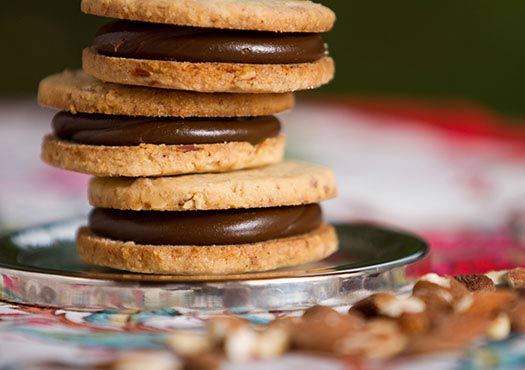Reduction of saturated fats in chocolate fillings

Saturated fats in processed foods are key contributors to the texture, mouth-feel, and taste. Many confectionery products and baked products contain a high amount of saturated fats and these can be harmful to health if consumed in excess. The nature of the fat and the amount consumed determine the potential health risks. Statutory regulations and ever growing consumer awareness about healthy eating mean that there is an increased need for food producers to find alternatives to saturated fats. Palm oil is currently often used and this is also controversial for environmental reasons. Using monounsaturated and polyunsaturated fats would be an easy way of increasing the nutritional profile of products. However, full or even partial replacement of solid fats by liquid oils (e.g. sunflower oil and rapeseed oil) presents industry with challenges. Retention of the structure of fat-rich foods such as filled chocolates/pralines and luxury baked products must be guaranteed.
Product reformulation using organogels and oleogel-like systems
The aim of the project is to retain the sensory properties and quality of chocolate fillings whilst altering the ingredients to improve the nutri-physiological fatty acid profile. In order to do this, technologies are required that immobilize unsaturated fats. The project team is developing so-called oleogels and oleogel-like systems that use oleogelling agents to convert unsaturated liquid oils into gels. The oleogelling agents form a stable network that embeds and immobilizes the oil. This approach enables undesirable hydrogenated fats and palm oil in foods to be replaced and gives liquid oils structure without changing their chemical composition.
Functional ingredients for immobilizing oil
The Fraunhofer IVV is involved with the development and optimization of systems for immobilizing oils. Various raw materials such as waxes, biopolymers, and dietary fibers are being screened and characterized and their use as potential gelling agents evaluated. The existing manufacturing methods, namely direct dispersion and the indirect method, are being adapted for the relevant gelling agents and complexes of gelling agents. The addition of as little as possible gelling agent to structure the oil is a top priority here. The aim is to use them in, for example, chocolate and praline fillings to reduce the amount of saturated fats, without compromising the eating enjoyment, texture, and resistance to fat bloom of the products.
Project term: |
2018 to 2021 |
Project management |
Federal Agency for Agriculture and Food BLE / Federal Ministry of Food and Agriculture BMEL (Program for Innovation Promotion) |
Project partners: |
August Storck KG; Brandt Zwieback-Schokoladen GmbH & Co. KG; Piasten GmbH; Paul Reber GmbH & Co. KG; A.Loacker AG; Confiserie Heilemann GmbH |
 Fraunhofer Institute for Process Engineering and Packaging IVV
Fraunhofer Institute for Process Engineering and Packaging IVV